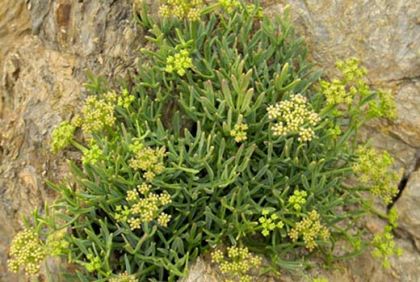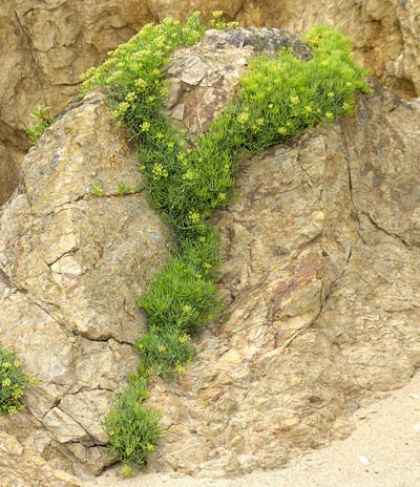On sea cliffs and shingle beaches, this grey-green, hairless perennial wildflower grows to a height of 40cm only. This plant has evolved to withstand the elements found in its coastal habitat. The fleshy stems carry wide umbels of yellow-green flowers (2mm across) from June to September, each umbel having up to 30 rays and many bracts below. The fleshy leaves have pinnate or bipinnate lobes, extremely narrow to tolerate harsh sea-winds. This is a native plant and it belongs to the family Apiaceae.
My earliest record of this plant is from Killiney, Co Dublin in 1977 and I photographed it on Blackhall Strand, Co Wexford in 2007.
If you are satisfied you have correctly identified this plant, please submit your sighting to the National Biodiversity Data Centre
The name 'Samphire' comes from the French name for the plant, 'Herbe de Saint Pierre' and the Italian 'Herba di San Pietra' as the plant was dedicated to that Biblical fisherman. In times past, Samphire was cooked in vinegar and made into a pickle. In the sixteenth century, herbalish John Gerard wrote: 'The leaves kept in pickle and eaten in sallads with oile and vinegar is a pleasant sauce for meat, wholesome for the stoppings of the liver, milt and kidnies. It is the pleasantest sauce, most familiar and best agreeing with man's body'
Samphire gathering was not always a safe business, those doing so sometimes taking appalling risks to collect it. This danger was written of by William Shakespeare in King Lear :
'Half-way down
Hangs one that gathers samphire; dreadful trade!'




